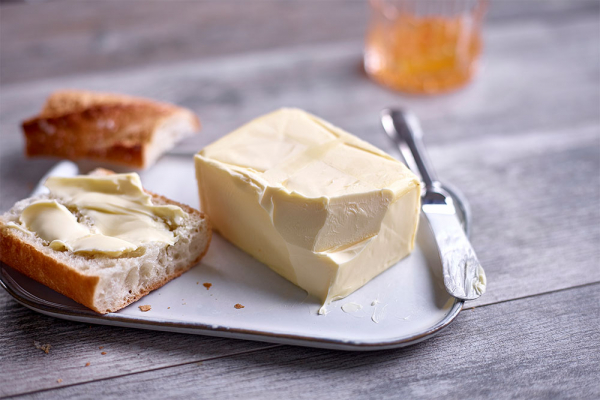Butter

European butters are sought after because of their higher fat percentage, usually at 82% or even more. Dairy herds tend to be left to graze on open grassland where the different grasses contribute to the flavours in the milk. More fat in butter means more flavour and a creamier texture. This is particularly good for baking pastries and cakes.
The European Union has strict rules and regulations in place to ensure that no hormones or antibiotics are used in the production of dairy products, and that its stringent animal welfare rules are adhered to. This has a direct impact on the quality of the milk and, therefore, all dairy products made in the EU.
Different countries and regions throughout Europe all have their different butters. Rucavas baltais sviests PGI is a variety of freshly churned butter from Latvia. French Guerande sea salt butter uses crunchy salt crystals from the marshes of Guérande to make a very distinct creamy butter. And you will recognise Mantequilla de l'Alt Urgell y la Cerdanya PDO from Spain due to its bright yellow colour from Fresian cow’s milk.
